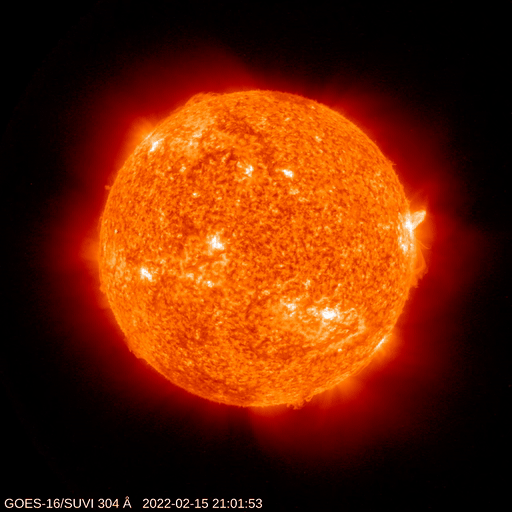
On Feb. 15, 2022, the Solar Ultraviolet Imager (SUVI) instrument onboard NOAA’s GOES East satellite observed a large and powerful eruption from the Sun. Fortunately, the eruption itself occurred on the far side of the Sun and was not directed towards Earth, so we are unlikely to see any space weather-related effects.
Eruptions are explosions of huge amounts of super-heated plasma, or electrified gasses, that travel into the solar system. Often, flares happen at the start of an eruption. Over the past few weeks the Sun has been quite active, undergoing a series of smaller eruptions, which is not unexpected as we head into a more active solar cycle.
SUVI is a telescope that takes images of the full Sun in six extreme ultraviolet channels around the clock. Various elements in the atmosphere of the Sun release light at specific wavelengths depending on their temperature, so by observing in several different wavelengths, it can give us a more complete picture of the Sun’s upper atmospheric and underlying structure.
The GOES-East geostationary satellite's high-resolution imagery provides optimal viewing of severe weather events. However, it doesn’t just view Earth. The satellite also carries a suite of instruments, such as SUVI and EXIS, that monitor the Sun and detect approaching space weather hazards.
